
Anthony Berkeley Cox was an English crime writer. He wrote under several pen-names, including Francis Iles, Anthony Berkeley and A. Monmouth Platts.
Leave It to Todhunter is a 1958 British television series which originally aired on the BBC in 1958. It is based on the 1937 novel Trial and Error by Anthony Berkeley.

Death at the Opera is a 1934 mystery detective novel by the British writer Gladys Mitchell. It was the fifth novel in her series featuring the psychoanalyst and amateur detective Mrs Bradley. It was published in the United States under the alternative title of Death in the Wet.
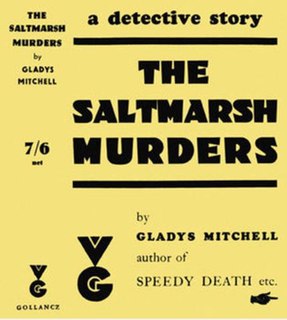
The Saltmarsh Murders is a 1932 mystery detective novel by the British writer Gladys Mitchell. It is the fourth in her long-running series featuring the psychoanalyst and amateur detective Mrs Bradley. It has been highly acclaimed as a part of the Golden Age of Detective Fiction.

Come Away, Death is a 1937 mystery detective novel by the British writer Gladys Mitchell. It is the eight in her long-running series featuring the psychoanalyst and amateur detective Mrs Bradley. Although the plot revolves around Greek Mythology, the title is taken from a line from Shakespeare's Twelfth Night. It was followed by a loose sequel Lament for Leto in 1971.
Printer's Error is a 1939 mystery detective novel by the British writer Gladys Mitchell. It is the tenth in her long-running series featuring the psychoanalyst and amateur detective Mrs Bradley.
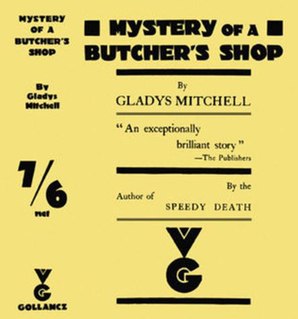
The Mystery of a Butcher's Shop is a 1929 mystery detective novel by the British writer Gladys Mitchell. It is the second in her long-running series featuring the psychoanalyst and amateur detective Mrs Bradley. It further established the reputation of the quick-witted Bradley who is some way ahead of the investigating police officers. Mitchell also employed a number of original touches that would continue during the series.
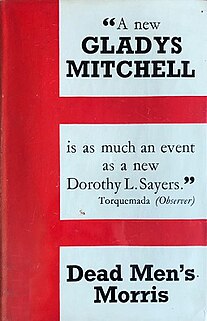
Dead Men's Morris is a 1936 mystery detective novel by the British writer Gladys Mitchell. It is the seventh in her long-running series featuring the psychoanalyst and amateur detective Mrs Bradley. It was the first to be published by Michael Joseph who released all the subsequent fifty nine novels in the series. It was later republished with the alternative title Death Comes at Christmas.

Laurels are Poison is a 1942 mystery detective novel by the British writer Gladys Mitchell. It is the fourteenth in her long-running series featuring the psychoanalyst and amateur detective Mrs Bradley. It was Mitchell's own favourite among her novels and has been considered her best by other critics. It introduced the character of Laura Menzies who became recurring assistant of Mrs Bradley in subsequent novels.
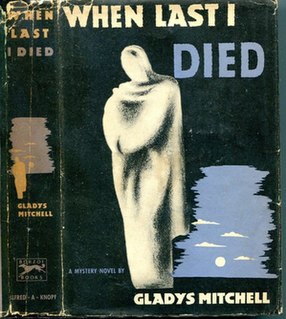
When Last I Died is a 1941 mystery detective novel by the British writer Gladys Mitchell. It is the thirteenth in her long-running series featuring the psychoanalyst and amateur detective Mrs Bradley. In a review in The Observer, Maurice Richardson described it as "perhaps Miss Mitchell’s best, most ingenious crime story yet."
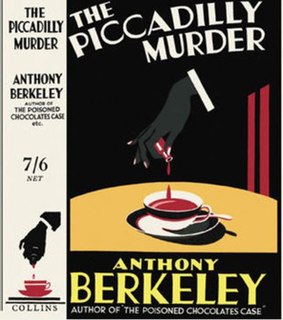
The Piccadilly Murder is a 1929 mystery detective novel by the British writer Anthony Berkeley. Berkley was a prominent writer during the Golden Age of Detective Fiction, known for his private detective Roger Sheringham series and his development of the inverted detective story. Although not part of the Sheringham series it featured the character of Chief Inspector Moresby of Scotland Yard who also appeared several times with Sheringham. Moresby reappeared with the chief protagonist Chitterwick in a sequel Trial and Error in 1937.

Not to Be Taken is a 1938 mystery detective novel by the British writer Anthony Berkeley. It was one of several stand-alone novels he wrote alongside his series featuring the private detective Roger Sheringham. It was written when the Golden Age of Detective Fiction was at its height. It was published in the United States with the alternative title A Puzzle in Poison.

Colonel Gore’s Second Case is a 1925 detective novel by the Irish writer Lynn Brock. It was the second in his series of seven novels featuring the character of Colonel Wyckham Gore. Gore enjoyed popularity during the early stages of the Golden Age of Detective Fiction. After solving his first case Gore now establishes his own detective agency.

Death in the House is a 1939 detective novel by the British writer Anthony Berkeley. It was one of a number of stand-alone novels he wrote alongside his series featuring the private detective Roger Sheringham. It was his penultimate novel, and his final whodunnit. In later years he continued writing reviews of other crime novels, but no longer wrote his own.

Cicely Disappears is a 1927 mystery novel by the British writer Anthony Cox, written under the pen name of A. Monmouth Platts. Berkley used a variety of pseudonyms during his career, in this case based on two properties he was associated with in Watford. Cox had enjoyed success with novels featuring his private detective Roger Sheringham, at first published anonymously, and also wrote a number of stand-alone novels such as this one.
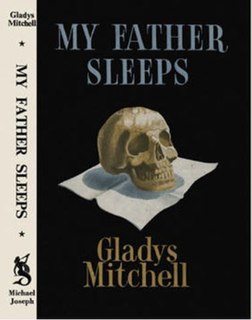
My Father Sleeps is a 1944 mystery detective novel by the British writer Gladys Mitchell. It is the seventeenth in her long-running series featuring the psychoanalyst and amateur detective Mrs Bradley. It is set in the Western Highlands of Scotland.
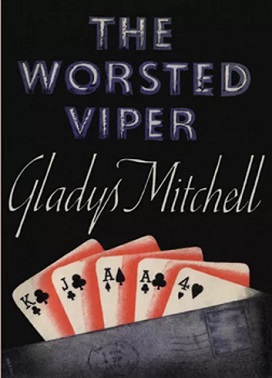
The Worsted Viper is a 1943 detective novel by the British writer Gladys Mitchell. It is the fifteenth in her long-running series featuring the psychoanalyst and amateur detective Mrs Bradley. Bradley was one of a number of investigators active during the Golden Age of Detective Fiction. Much of the novel takes place on the Norfolk Broads.

As for the Woman is a 1939 novel by the British writer Anthony Berkeley, written under the pen name of Francis Iles. It was the final novel of Berkeley, a key writer of the Golden Age of Detective Fiction, as he concentrated on reviewing after this point. He later told fellow writer John Dickson Carr that he produced the book during a period of great emotional strain and that its poor commercial and critical reception affected him badly. Thereafter he turned down all offers to write further novels. Although two further novels under the Iles novels were announced by the publisher, neither of them were ever released.

Antidote to Venom is a 1938 detective novel by the Irish-born novelist Freeman Wills Crofts. It is the eighteenth in his series of novels featuring Chief Inspector French, a Scotland Yard detective known for his methodical technique. It was reissued in 2015 by the British Library Publishing as part of a group of crime novels from the Golden Age of Detective Fiction.

The Box Office Murders is a 1929 detective novel by the Irish-born writer Freeman Wills Crofts. It is the fifth in his series of novels featuring Inspector French, a prominent figure of the Golden Age of Detective Fiction. It was published in the United States the same year by Harper under the alternative title The Purple Sickle Murders.


















